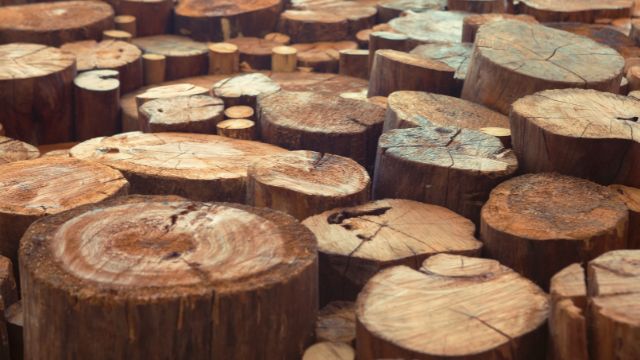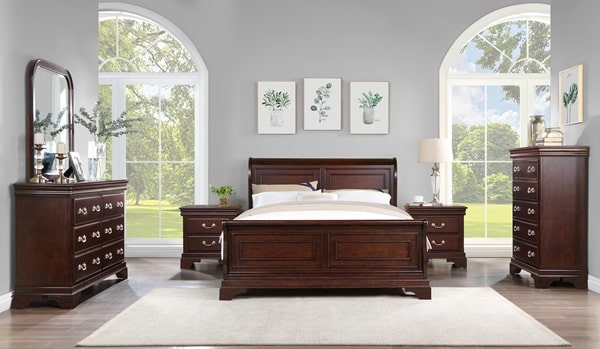Let’s say you’re all set for your next woodworking adventure, and the excitement is real. The only hurdle is deciding between Sal wood and Teak wood for that perfect piece of furniture you’ve been dreaming about. Well, both these gems of the forest are celebrated for their strength, charm, and adaptability in the world of woodworking. But the thing is, it is not that easy to decide which Wood to choose for your project. However, if you carefully weigh the pros and cons of both Sal Wood and Teak Wood, you can actually decide better which wood type would be a perfect fit for your project. And we are here to help you out with just that because here we will be going over the potential pros and cons of both Sal Wood and Teak Wood. So yeah, get ready to arm yourself with all the knowledge you need to select the best wood for your next creative endeavor.
What Is Sal Wood?
Sal Tree is a native of the woodlands in India and Nepal. This tree plays a crucial role in India’s timber market, offering one of the most valuable hardwood sources in the region. Freshly cut, Sal wood has a natural, light shade but with continuous sun exposure, it adopts a darker, richer hue. There’s a certain resilience to this wood, stemming from its high resin content, which makes it one of the hardest and most robust timber types you can find. This is why builders and constructors prize it highly.
Pros Of Sal Wood
- Firstly, if you’re in search of a material that’s as robust as a rock, sal wood should be your go-to choice. Its strength is no joke, surpassing that of teak wood by 30% in weight and a whopping 45% to 50% in hardness. This incredible durability makes it perfect for those heavy-duty tasks.
- It laughs in the face of termites, white ants, and fungi, making it a hardy, enduring selection for both construction and furniture purposes.
- Sal wood shrugs off moisture allowing it to be used across a range of environments without the fear of water damage.
Cons Of Sal Wood
- Its notable hardness, while great for sturdiness, can be a bit of a pain when it comes to sawing and working with it.
- Too much direct sunlight exposure can lead to unsightly cracks in the wood. So you’ll need to think carefully about where it’s placed or how it’s treated to prevent sun damage.
- Lastly, despite its numerous benefits, sal wood falls a bit short when it comes to exterior doors or furniture. Its tendency to shrink and swell might not make it the best candidate for these applications. So, while sal wood is quite versatile, you’ll still need to consider its specific quirks for certain uses.
What Is Teak Wood?
If there was a royal family among woods types, Teak would be the crowned king. Known for its incredible durability and impressive water resistance, this hardwood is a natural choice for many. The Teak tree feels at home in tropical climates, with countries like Thailand and Burma acting as primary contributors to the global Teak wood supply. The excellent qualities of Teak make it a preferred material for crafting indoor and outdoor furnishings, not to mention its popularity in hardwood flooring.
Pros Of Teak Wood
- The durability of teak wood is second to none. Its impressive strength and longevity have made it a long-standing favorite.
- Its furniture spells sophistication and high quality. Its gorgeous texture and linear grain pattern are sights to behold. Plus, the glowing golden brown shade of teak furniture only adds to its extravagant appeal.
- Teak wood is a pleasure to work with. It lends itself to an array of furniture designs. From staining to painting, polishing to waxing, or varnishing, teak wood can be treated in a multitude of ways to match your home aesthetic.
- Teak wood is built to withstand the test of time. It bravely fends off rot, decay, and even termites. This robustness makes it a reliable option for long-term usage.
- When it comes to dealing with heat, teak wood knows how to play it cool. It’s an ideal choice for outdoor furniture because it doesn’t scorch in summer and manages to retain warmth in winter.
Cons Of Teak Wood
- One major stumbling block when considering teak wood is its price. The high demand and limited supply of teak timber in the market have skyrocketed its prices in recent years.
- Authentic and high-quality teak wood can only be recognized by an expert. As a customer, you might struggle to ascertain whether the furniture you’re eyeing is made of pure teak wood or some other hardwood variant.
Conclusion
All in all, when you’re on the brink of making that crucial decision, consider what’s most important to you. Is it about getting value for money, or is durability your ultimate deal-maker? Are you drawn to the wood’s natural allure, or are eco-friendly options your go-to? Always remember, gaining insights into these wood’s properties and uses will arm you with the power to make a well-versed choice.


